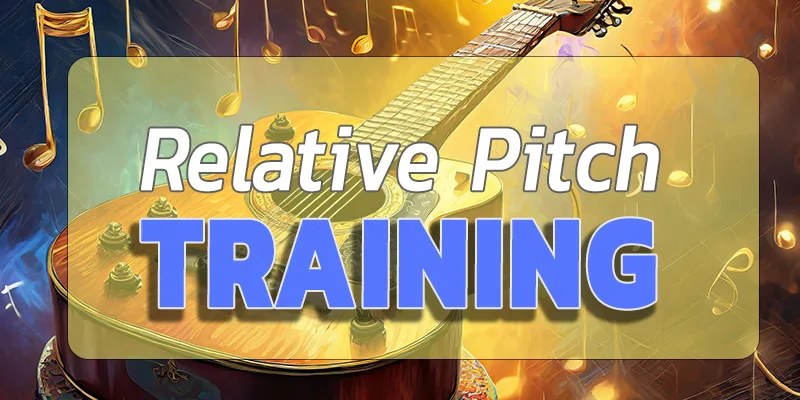
In the world of jazz guitar, where the spontaneity of improvisation meets the depth of harmony, the skill of relative pitch can be your greatest ally. As we journey through the nuances of jazz, we recognize that our instrument is not just a tool but an extension of our voice, capable of expressing the intricate melodies and complex harmonies that define this timeless genre. For the discerning jazz guitarist, particularly those of us in the golden years, refining our relative pitch is not just about technical mastery; it’s about deepening our musical conversation.
The Essence of Relative Pitch
Relative pitch allows us to understand and internalize the relationship between notes, providing us with the ability to identify and reproduce melodies, harmonies, and chord progressions by ear. In jazz, where improvisation is king, possessing a keen relative pitch means you can navigate chord changes fluidly, anticipate musical direction, and engage more intuitively with your bandmates.
Starting with the Basics
The journey towards enhancing your relative pitch begins with simple, yet effective exercises. Start with interval recognition—playing two notes either sequentially or simultaneously and identifying the distance between them. Begin with the basics: major and minor thirds, perfect fifths, and then gradually incorporate more complex intervals like diminished fifths and augmented fourths.
An anecdote that comes to mind involves a seasoned jazz guitarist, who, despite his years of experience, dedicated part of his practice to playing random intervals every morning. This simple routine not only sharpened his ear but also introduced a fresh perspective to his improvisations, proving that mastering the basics can lead to profound musical growth.
The Gravity Concept in Practice
The gravity concept, as detailed by Jamie Taylor, offers a fascinating approach to understanding how certain notes within a scale exert a “gravitational pull” towards tonal centers or home notes. This concept is particularly useful in jazz, where the harmonic structure can be complex and fluid.
To incorporate this into your practice, try playing a dominant seventh chord and listen to how it ‘wants’ to resolve to the tonic. Notice the tension in the seventh and how it seeks resolution. This exercise not only aids in relative pitch development but also deepens your understanding of harmonic movement in jazz.
Advanced Techniques for the Seasoned Ear
For those who are comfortable with the basics, it’s time to delve into more advanced territory. Start with chord quality recognition. Play a chord and identify not just its root but also whether it’s major, minor, diminished, or augmented. Then, challenge yourself with chord extensions and alterations, essential components in jazz harmony.
Remember the story of a jazz maestro who could identify extended chords and their alterations just by ear? He attributed his skill to relentless practice and an insatiable curiosity about the sounds he could produce on his guitar. This level of mastery transforms your playing from mere performance to a profound musical dialogue.
Practical Integration into Your Routine
Incorporating relative pitch training into your existing practice routine doesn’t have to be daunting. Dedicate a segment of your practice to playing melodies by ear. Start with simple tunes and gradually progress to more complex jazz standards. Transcribe solos from your favorite jazz records, a practice that not only hones your ear but also offers insight into the stylistic nuances of great jazz guitarists.
Listening: The Key to Unlocking Your Ear
The importance of active listening cannot be overstressed. Spend time absorbing the work of jazz legends. Listen not just for pleasure, but with an analytical ear. Try to dissect their solos, understand their choice of notes, their phrasing, and how they interact with other instruments. This practice will not only improve your relative pitch but also immerse you in the rich tapestry of jazz history and style.
Essentially, incorporating relative pitch training into your jazz guitar practice is a journey that requires patience, persistence, and passion. It’s about connecting more deeply with the music you love, expanding your expressive capabilities, and engaging in a more profound musical conversation. Whether you’re playing a smoky blues, a swift bebop tune, or a lush ballad, your enhanced relative pitch will allow you to navigate the harmonic landscape with confidence and creativity.
As we continue to explore the depths of jazz guitar, let us remember that our pursuit of musical excellence is not just about personal achievement; it’s about contributing to the rich tradition of jazz and sharing its beauty with the world. So, pick up your guitar, tune into the sounds around you, and let the journey of musical discovery begin.


0 responses on "Incorporating Relative Pitch Training in Your Jazz Guitar Practice Routine"